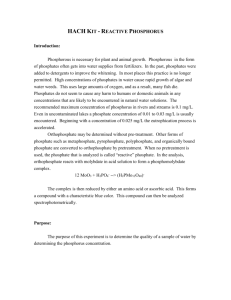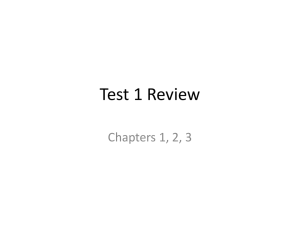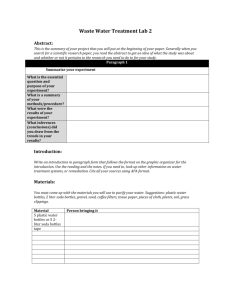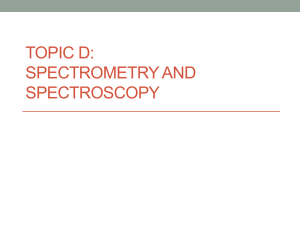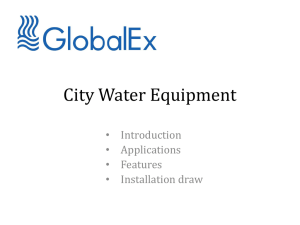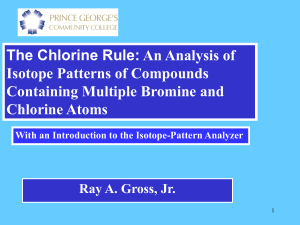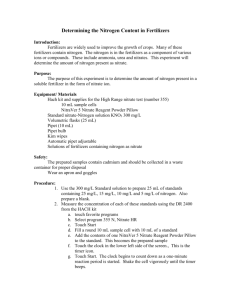What Killed the Frogs in the Stream (Fish Tank)
advertisement
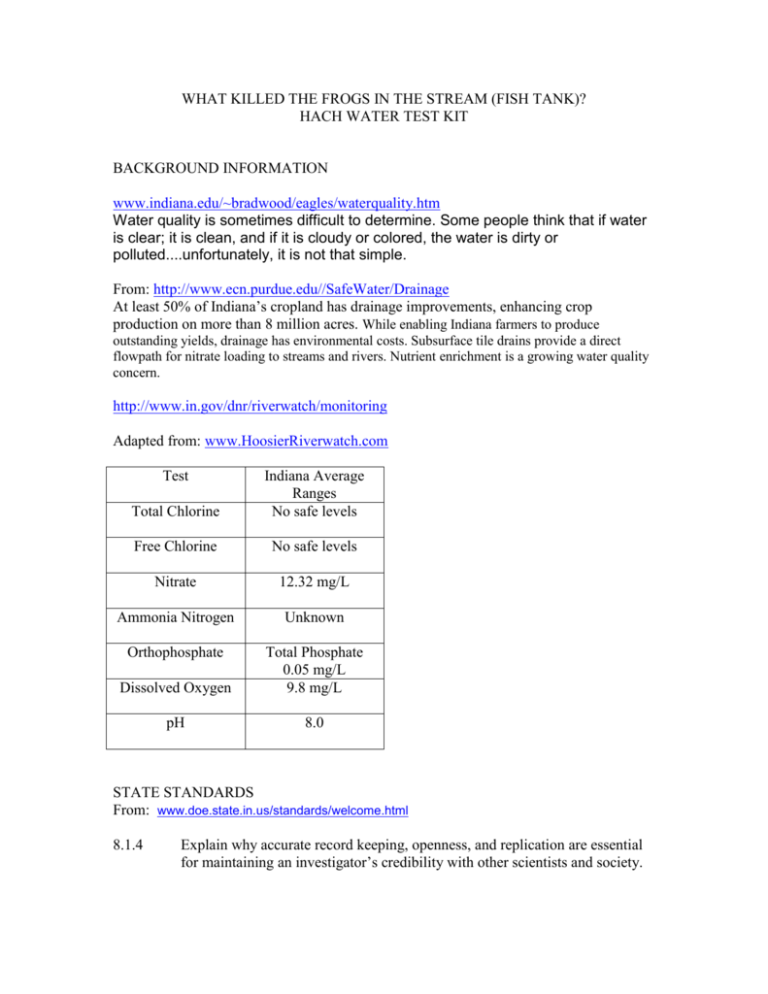
WHAT KILLED THE FROGS IN THE STREAM (FISH TANK)? HACH WATER TEST KIT BACKGROUND INFORMATION www.indiana.edu/~bradwood/eagles/waterquality.htm Water quality is sometimes difficult to determine. Some people think that if water is clear; it is clean, and if it is cloudy or colored, the water is dirty or polluted....unfortunately, it is not that simple. From: http://www.ecn.purdue.edu//SafeWater/Drainage At least 50% of Indiana’s cropland has drainage improvements, enhancing crop production on more than 8 million acres. While enabling Indiana farmers to produce outstanding yields, drainage has environmental costs. Subsurface tile drains provide a direct flowpath for nitrate loading to streams and rivers. Nutrient enrichment is a growing water quality concern. http://www.in.gov/dnr/riverwatch/monitoring Adapted from: www.HoosierRiverwatch.com Test Total Chlorine Indiana Average Ranges No safe levels Free Chlorine No safe levels Nitrate 12.32 mg/L Ammonia Nitrogen Unknown Orthophosphate Dissolved Oxygen Total Phosphate 0.05 mg/L 9.8 mg/L pH 8.0 STATE STANDARDS From: www.doe.state.in.us/standards/welcome.html 8.1.4 Explain why accurate record keeping, openness, and replication are essential for maintaining an investigator’s credibility with other scientists and society. 8.1.8 8.2.2 8.2.4 8.2.4 8.3.8 8.3.10 8.3.11 Explain that humans help shape the future by generating knowledge, developing new technologies, and communicating ideas to others. Determine in what units, such as seconds, meters, grams, etc., an answer should be expressed based on the units of the inputs to the calculation. Use technological devices, such as calculators and computers, to perform calculations. Use technological devices, such as calculators and computers, to perform calculations. Explain that all matter is made up of atoms* which are far too small to see directly through an optical microscope. Understand that the atoms of any element* are similar but are different from atoms of other elements. Further understand that atoms may stick together in well-defined molecules or may be packed together in large arrays. Also understand that different arrangements of atoms into groups comprise all substances. Explain that increased temperature means that atoms have a greater average energy of motion and that most gases expand when heated. Describe how groups of elements can be classified based on similar properties, including highly reactive metals*, less reactive metals, highly reactive nonmetals*, less reactive nonmetals, and some almost completely non-reactive gases. MATERIALS (per group) Hach Water Test Kit Thermometer (Celsius) pH paper or pH meter Beaker PROCEDURE 1. Using the Hach Water Test Kit, do a chemical analysis of the Frog Crime Scene. You will use the kit and the instructions to complete an analysis for chlorine, nitrates, ammonia nitrogen, orthophosphate and dissolved oxygen. 2. Be sure to record your data in the table using the correct units. 3. For Temperature, find a place to take a temperature. Place the thermometer under the water and allow to settle for 1-2 minutes. Read the temperature and record on the table. 4. Move UPSTREAM 1 mile and repeat. Read and record the temperature. Determine the difference between the two readings. This difference should be less than 2.8 degrees C. 5. For pH, use pH paper and place a drop of the water on the test strip. Record the pH level for that area on your chart. If you have a pH meter or probe, place a sample of water in a small beaker. Place the probe in the water and record the reading from the pH meter. DATA COLLECTION WHAT KILLED THE FROGS IN THE STREAM (FISH TANK)? Name __________________________ Date _____________________ Per___ Total Chlorine Estimated “Safe” Amount No safe levels Free Chlorine No safe levels Nitrate 0-36.08 mg/L Ammonia Nitrogen (NH3, NH4+1) Orthophosphate Under 1.0 mg/L total (Total Phosphate) 0-0.85 mg/L 5.4 to 14.2 mg/L Test Color on Color Wheel Dissolved Oxygen No Reading Temperature of Water pH No Reading Actual Reading Downstream: Upstream: < 2.8 oC change for the 1 mile 7.2-8.8 Post-Lab Questions Questions from: www.HoosierRiverwatch.com Dissolved Oxygen 1. What is dissolved oxygen? 2. How does it get into the water? 3. Why is it important? 4. What other chemical parameter directly influences the amount of oxygen the water can hold? pH 1. What is pH? 2. What is pH influenced by? What can happen in the environment to change the pH of water? 3. What can pH affect? 4. What other chemical parameters affect pH? Water Temperature Change 1. What does testing for water temperature change involve? 2. What can cause water temperature to change (in particular, what can cause it to increase)? 3. What problems result from increases in water temperatures? 4. What other chemical parameter may lead to increased water temperature? Phosphates 1. What are phosphates? 2. How do they get into the water? What are the sources? 3. What can result from excess phosphates in water? 4. What other chemical parameters are affected by high phosphate levels? Nitrates 1. What are nitrates? 2. How do they get into the water? What are the sources? 3. What can result from excess nitrates in water? 4. What other chemical parameters are affected by high nitrate levels? Chlorine 1. What is chlorine? 2. What is it used for? 3. Why is it so toxic in small amounts? Ammonia Nitrogen 1. What is ammonia? 2. What is the difference between NH3 and NH4+1? Overall Analysis 1. Compare the results for each test to the expected levels. 2. Explain, using your data collected, what killed the frogs. Written By Cammy Rodgers (Rossville Middle School) and Mary Jones (Doe Creek Middle School) Teacher Notes 1. Orthophosphate reading should be less than that of the Total Phosphate standard. 2. Run each test as indicated by the Hach Manual. 3. Some questions may require students to “search” for the answers if you do not already discuss these in class.
